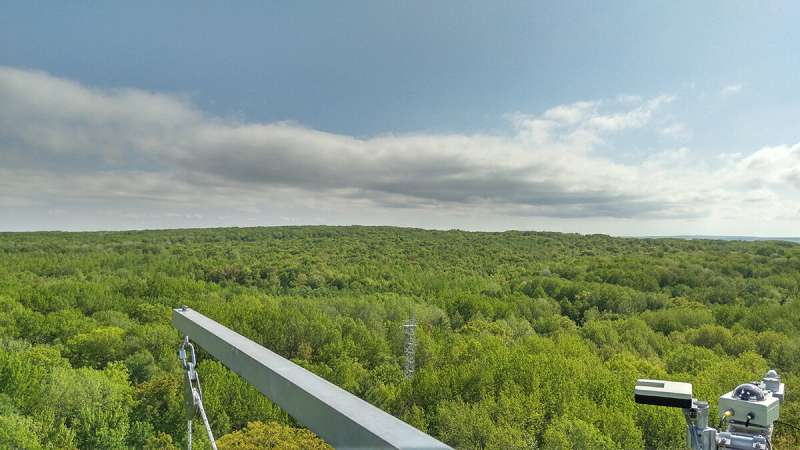

A foundational element of plant metabolism is the transport of water from the ground to the leaves. In most plants, this task is facilitated by xylem, a tissue whose structure provides hydraulic pathways that aid the water’s upward movement. As plants face stressors such as drought, they respond by modifying their transport characteristics. Thus, an accurate understanding of their hydraulic properties is critical to modeling the effects of climate change on plant populations as well as to providing insight into how plant populations’ water use will affect the global water, energy, and carbon cycles.
However, experts have been challenged by individual plants’ hydraulic variability, even among members of the same species. Plus, direct measurement of internal plant structures requires significantly more time and resources than external observables, such as leaf size.
Lu et al. attempt to sidestep these difficulties by constructing a model reliant on a more easily obtained alternative: sap flow rates. After developing a model that predicts sap flow on the basis of hydraulic properties, they used the Markov chain Monte Carlo methodology to invert it such that real-world observations of sap flow can be used to infer the underlying hydraulic characteristics. They derived their input data from 2015 measurements taken in northern Michigan.
In addition to a series of synthetic tests, the authors used sap flow observations from four tree species: red maple, paper birch, bigtooth aspen, and white pine. Their approach successfully predicted sap flow trends from environmental data, such as atmospheric conditions, and it can distinguish a unique response from each species of tree.
This new method opens the way for better understanding of interspecies and intraspecies variation in the response to large-scale climate events. According to the authors, this approach could be further improved through the integration of additional environmental observations.
The research was published in Journal of Geophysical Research: Biogeosciences.
Invasive gum rockrose threatens cork oaks in Portugal
Yaojie Lu et al, Intra‐Specific Variability in Plant Hydraulic Parameters Inferred From Model Inversion of Sap Flux Data, Journal of Geophysical Research: Biogeosciences (2022). DOI: 10.1029/2021JG006777
American Geophysical Union
This story is republished courtesy of Eos, hosted by the American Geophysical Union. Read the original storyhere.
Citation:
Using sap flow to infer plant hydraulic properties (2022, July 29)
retrieved 29 July 2022
from https://phys.org/news/2022-07-sap-infer-hydraulic-properties.html
This document is subject to copyright. Apart from any fair dealing for the purpose of private study or research, no
part may be reproduced without the written permission. The content is provided for information purposes only.